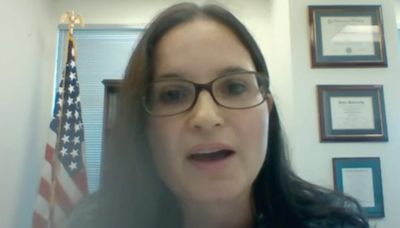Search results
Mars is less dense than Earth, having about 15% of Earth's volume and 11% of Earth's mass, resulting in about 38% of Earth's surface gravity. Mars is the only presently known example of a desert planet, a rocky planet with a surface akin to that of Earth's hot deserts.
Mars is one of the easiest planets to spot in the night sky – it looks like a bright red point of light. Despite being inhospitable to humans, robotic explorers – like NASA's Perseverance rover – are serving as pathfinders to eventually get humans to the surface of the Red Planet.
When the solar system settled into its current layout about 4.5 billion years ago, Mars formed when gravity pulled swirling gas and dust in to become the fourth planet from the Sun. Mars is about half the size of Earth, and like its fellow terrestrial planets, it has a central core, a rocky mantle, and a solid crust.
2 hari yang lalu · Mars, fourth planet in the solar system in order of distance from the Sun and seventh in size and mass. It is a periodically conspicuous reddish object in the night sky. Mars is designated by the symbol ♂. Sometimes called the Red Planet, Mars has long been associated with warfare and slaughter.
Overview. Mars is the fourth planet from the Sun – a dusty, cold, desert world with a very thin atmosphere. Mars is also a dynamic planet with seasons, polar ice caps, canyons, extinct volcanoes, and evidence that it was even more active in the past.
Mars rotates on its axis every 24.6 Earth hours, defining the length of a Martian day, which is called a sol (short for “solar day”).
Mars is one of the easiest planets to spot in the night sky – it looks like a bright red point of light. Despite being inhospitable to humans, robotic explorers – like NASA's new Perseverance rover – are serving as pathfinders to eventually get humans to the surface of the Red Planet.
It is half the size of Earth. Mars is sometimes called the Red Planet. It's red because of rusty iron in the ground. Like Earth, Mars has seasons, polar ice caps, volcanoes, canyons, and weather. It has a very thin atmosphere made mostly of carbon dioxide, nitrogen, and argon.
6 hari yang lalu · Jun 18, 2024. Article. Mars Perseverance Sol 1175 - Right Mastcam-Z Camera: A jumbled field of light toned rocks with unusual ‘popcorn’-like textures and abundant mineral veins. NASA's Mars Perseverance rover acquired this image using its Right Mastcam-Z camera. Mastcam-Z is a pair of cameras located high on the rover's mast.
NASA's Mars Perseverance rover is building a unique rock collection, which also includes samples of Mars atmosphere and loose surface material. These samples record the history of the Jezero Crater landing site, and may even preserve signs of ancient life.



